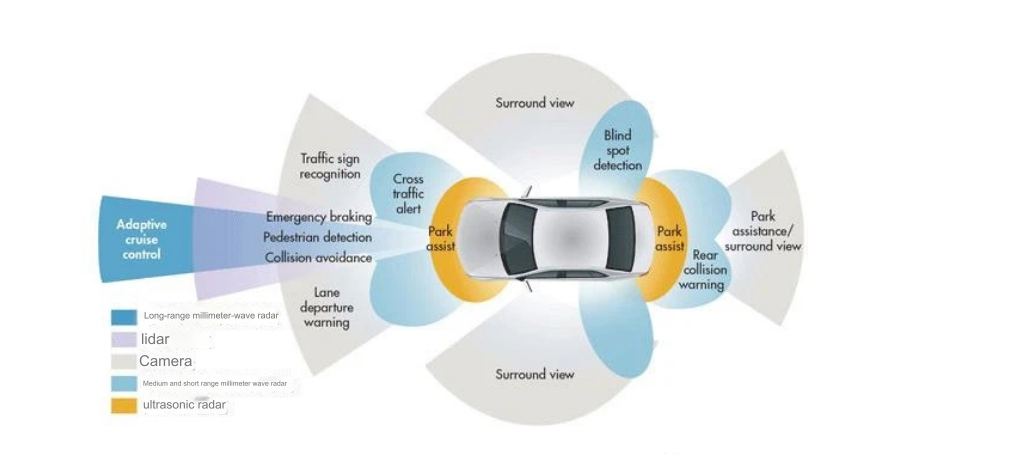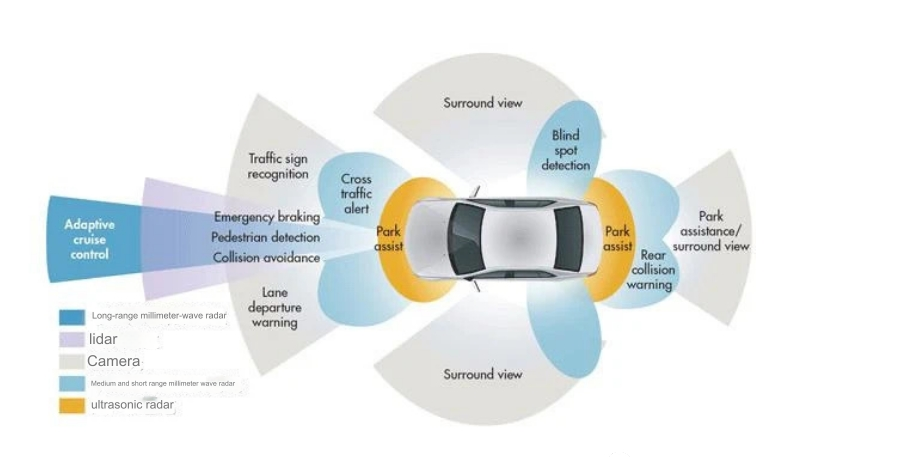Introduction
LiDAR (Light Detection and Ranging) is widely recognized as one of the most critical technologies driving the evolution of autonomous vehicles. It enables the real-time 3D modeling of the vehicle’s surroundings, detecting obstacles, mapping roadways, and providing vital information to the vehicle’s navigation system. By fusing data from other sensors like cameras, radar, and inertial measurement units (IMUs), LiDAR enhances the overall perception system, allowing vehicles to accurately assess and plan their driving routes. In this blog, we will explore how LiDAR has revolutionized autonomous driving and how companies like CPJ ROBOT are addressing the challenges of commercializing LiDAR for mass adoption.
The Role of LiDAR in Autonomous Vehicles
LiDAR plays a central role in autonomous driving by offering precise and real-time environmental data. It scans the surroundings and generates point clouds, which are essential for detecting nearby obstacles, identifying pedestrians, and recognizing road signs. This capability allows vehicles to make real-time decisions based on highly accurate data, ensuring safer navigation and smoother driving.
However, LiDAR technology is not without its challenges. One of the key obstacles is the size and cost of traditional mechanical-scanning LiDAR systems. These systems, though powerful, tend to be bulky and expensive, limiting their commercial scalability. To address this, researchers and companies are actively developing smaller, more compact solid-state LiDAR solutions that offer the same high performance but with reduced complexity, cost, and size.

Challenges and Innovations in LiDAR
Despite its advanced sensing capabilities, LiDAR faces some performance limitations in challenging environments. For instance, its detection accuracy can be impacted by adverse weather conditions such as rain, snow, and strong sunlight. To overcome these limitations, researchers are continuously working on enhancing LiDAR’s adaptability in various conditions. New algorithms and hardware are being designed to improve LiDAR’s robustness, enabling more reliable performance in complex driving environments.
Another challenge lies in processing the vast amount of data generated by LiDAR. A single LiDAR system can produce thousands or even millions of data points per second, creating a significant computational burden. Efficient data processing algorithms and hardware accelerators are currently being developed to handle this data in real-time, allowing autonomous systems to make quick, accurate decisions without compromising safety.
CPJ ROBOT’s Innovations in LiDAR Technology
CPJ ROBOT is at the forefront of LiDAR innovation, producing compact, high-performance LiDAR systems that cater to the unique demands of the autonomous driving industry. Their LiDAR sensors are designed to integrate seamlessly with other sensor technologies like cameras and radar, providing a holistic view of the vehicle’s surroundings. By offering centimeter-level accuracy in distance measurement and object recognition, CPJ ROBOT’s LiDAR solutions are helping autonomous vehicles navigate with greater precision and reliability.
Moreover, CPJ ROBOT’s LiDAR is not limited to automotive applications. Their technology is also being utilized in interactive wall systems, tracking movements and gestures in real-time. This crossover between automotive and interactive technology highlights the versatility of LiDAR in creating cutting-edge solutions across industries.
The Future of LiDAR: Smaller, Cheaper, and More Powerful
The future of LiDAR in autonomous vehicles is promising. As the technology matures, solid-state LiDAR solutions are expected to become even more affordable and compact, further driving their adoption in commercial vehicles. Innovations such as MEMS (Micro-Electro-Mechanical Systems) and OPA (Optical Phased Array) LiDAR are on the horizon, offering superior performance while reducing costs.
CPJ ROBOT continues to lead these advancements, developing LiDAR systems that are not only optimized for autonomous driving but also for other industries that require precise 3D mapping and real-time environmental awareness.
Conclusion
LiDAR is undoubtedly a game-changer in the autonomous driving space, providing the critical data needed for safe and efficient vehicle navigation. As challenges related to size, cost, and performance in complex environments are addressed, LiDAR’s role will only grow stronger. Companies like CPJ ROBOT are driving these innovations, making LiDAR more accessible and reliable for both automotive and interactive applications.
Want to learn how LiDAR can transform your autonomous driving systems or interactive projects? Explore CPJ ROBOT’s cutting-edge LiDAR solutions and see how their advanced technology can help bring your vision to life.







